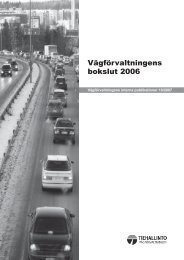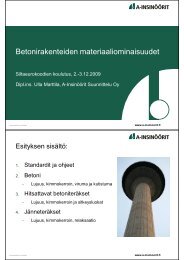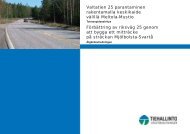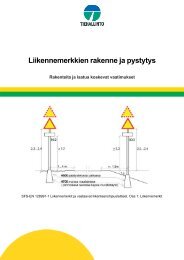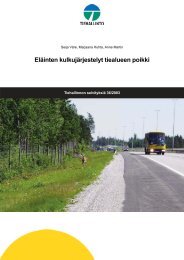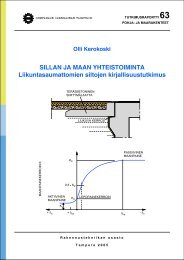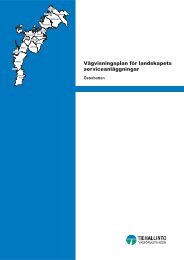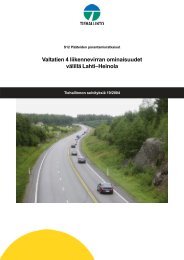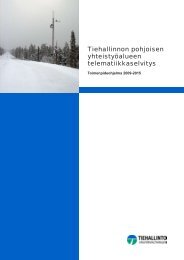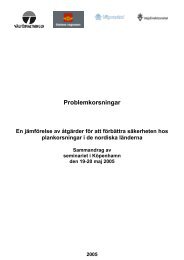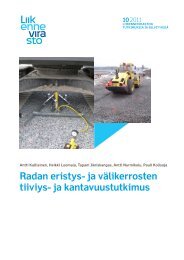Jäänmurtopalvelujen kehittäminen
Jäänmurtopalvelujen kehittäminen
Jäänmurtopalvelujen kehittäminen
You also want an ePaper? Increase the reach of your titles
YUMPU automatically turns print PDFs into web optimized ePapers that Google loves.
The Finnish Transport Agency starts the preparations for competitive<br />
tendering of the icebreaking service in 2011, so that the competitive<br />
tendering can be carried out in 2012. A new icebreaker is required to<br />
replace the icebreaker Voima’s services starting from the winter season<br />
2015/16. In the competitive tendering a so-called lifecycle model is<br />
used, in which the service producer acquires an icebreaker and includes<br />
the acquisition price of the new icebreaker, the financing costs and<br />
other enterprise costs in connection with the icebreaker operation in<br />
the service price to be paid annually. The agreement period for a new<br />
icebreaker would be 25-30 years.<br />
3. future competitive tenderings are taken into account in the icebreaking<br />
agreement now in force with regard to the economic life cycle of the<br />
icebreakers included in the agreement. The Finnish Transport Agency<br />
arranges a new competitive tendering well in advance before the end of<br />
the icebreaker’s economic lifecycle.<br />
In the public administration reform a major part of the public authority functions and<br />
production functions were separated into different organisations. The authority organisation<br />
and the service producer have different roles and objectives. In part of the<br />
fairway operations the reform has been carried out to include<br />
steering, and the steering of the operational service level and the ownership steering<br />
have been separated into different ministries or to the Ownership Steering Department<br />
in the Prime Minister’s Office.<br />
In regard to this, the working group proposes that<br />
4. the steering of the icebreaking service level and the ownership steering<br />
is separated.<br />
Technical requirements and performance of the icebreakers<br />
The fourth task of the working group was to examine the technical requirements and<br />
performance of the icebreakers. The work included assessments of the icebreakers’<br />
capital and crew costs, icebreaker fuels and lubrications and the consumption of these,<br />
the start and end of the icebreaking operations as well as the specifications of the present<br />
valid agreement on icebreaking services.<br />
The icebreaking needs vary during a winter season and also in different parts of the<br />
Finnish sea areas. Icebreakers with lower engine power can also manage the icebreaking<br />
operations at the beginning of the winter in all sea areas and during the<br />
whole winter in the Archipelago Sea and Sea of Åland. Because of this, icebreakers<br />
with lower operational costs should be effectively utilized in the icebreaking operations.<br />
However, a small icebreaker has, due to its insufficient breadth, restricted possibilities<br />
to assist large and wide vessels. The width of vessels and icebreakers has a<br />
large impact on the minimum requirements on the necessary icebreaker fleet in the<br />
future.<br />
The working group proposes that<br />
1. at the start and end of the icebreaking operations, the principle ”the<br />
most economical first out and last in” is followed. The aim is to follow<br />
the same practice in the framework agreement for additional icebreaking<br />
services.<br />
15



